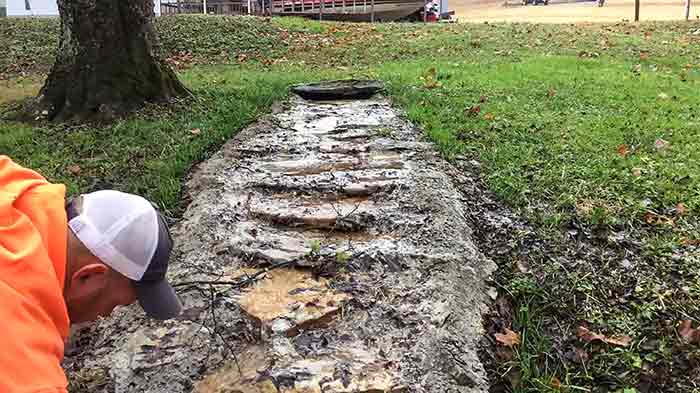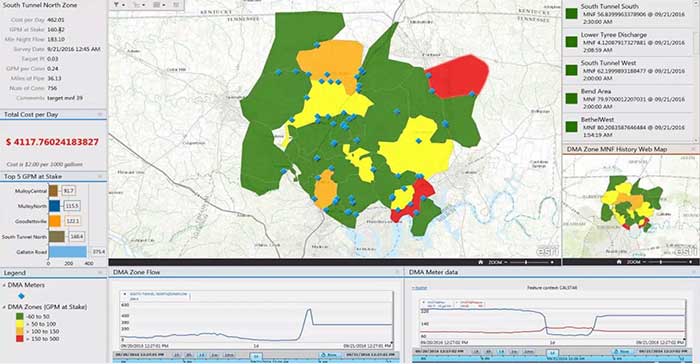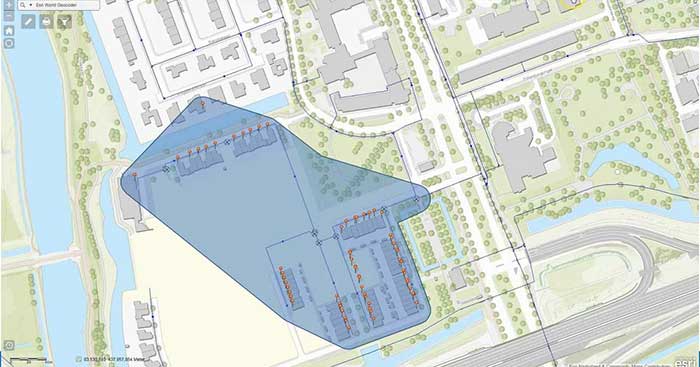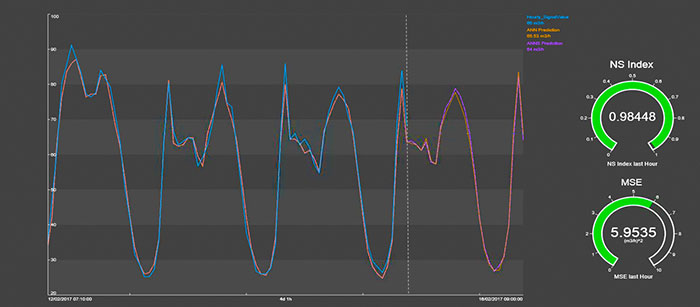Case studies show how detecting leaks saves resources from going down the drain.
OSIsoft
05/06/2019
Flat Rock Springs was a peaceful, pleasant part of the landscape. Unfortunately, it was not a natural spring. In reality, Flat Rock Springs is a relatively low-flow leak that had spilled 250 million to 500 million gallons since the late 1980s, according to Tennessee’s White House Utility District (WHUD), a municipal agency north of Nashville.
 Image 1. A customer of the WHUD thought this pipe break was a stream. Another WHUD customer named the “stream” Flat Rock Springs. Flat Rock spilled an estimated 250 million to 500 million gallons of water for over three decades before WHUD determined it was a leaky pipe. (Images courtesy of OSIsoft)
Image 1. A customer of the WHUD thought this pipe break was a stream. Another WHUD customer named the “stream” Flat Rock Springs. Flat Rock spilled an estimated 250 million to 500 million gallons of water for over three decades before WHUD determined it was a leaky pipe. (Images courtesy of OSIsoft)The Source of the Problem
Why is so much water being wasted? There are several reasons. Water networks are often old (20 percent of San Francisco’s water lines are over 100 years old), spread out across thousands of square kilometers and underground. Additionally, budgets are tight and customers are exceedingly demanding. Water has to be there. No one wants their shower to be only “17 percent loaded” like on Netflix. The problem gets even worse in emerging nations. Approximately 45 percent of the people in the world live in drylands, defined as regions that get 600 millimeters (mm) or less of rain a year, according to Alon Tal, a professor at Ben-Gurion University.Saving Wasted Water
Here is the good news: leakage can be fixed. In fact, water recovery has become one of the cheapest forms of sourcing water. Bluefield Research estimates water from leaks costs on average $1.21 per 1,000 gallons in the United States, less than half of the cost of traditional water. The techniques for reducing leakage vary. WHUD, for, instance, previously used acoustic sensors to try to locate drips. As you can imagine, it was often time-consuming and inefficient. They could hear leaks, but they were not easy to pinpoint. Image 4. A WHUD control console display of consumption, leakage losses and maintenance priorities (red, green and yellow). Typically, technicians will start their day by checking a screen like this. Previously, it could take hours to merge the data sources.
Image 4. A WHUD control console display of consumption, leakage losses and maintenance priorities (red, green and yellow). Typically, technicians will start their day by checking a screen like this. Previously, it could take hours to merge the data sources.Use Data to Tap into Savings
Maynilad in Manila did something similar, but on a much larger scale. It used flow, pressure and other data from meters and sensors to precisely triangulate the location of an underground leak. Unusual declines of pressure or flow were taken as symptoms of a leak. Over the next few years, leakage was cut in half and the number of people living in Manila who were getting adequate service over the full day rose from around 50 percent to more than 90 percent. Pinpointing the source of leaks also reduced the cost of repairs by reducing the amount of leaks. Fixing some leaks has dropped from $1.7 million to $1,250 per leak. Image 2. Evides in the Netherlands has developed a series of apps that quickly analyze operations data and serve up alarms. The pictured application shows the location of a recent pipe burst and how it is spreading.
Image 2. Evides in the Netherlands has developed a series of apps that quickly analyze operations data and serve up alarms. The pictured application shows the location of a recent pipe burst and how it is spreading.Other Applications
Once utilities begin using data, their consumption grows. Evides in the Netherlands has an in-house technology initiative called GAMEs in which engineers are building applications for detecting sudden breaks or providing notices to residents about outages. In the first year, it created 50 experimental applications and is moving toward commercializing the most vital ones into its operations. In the United Kingdom, United Utilities in Manchester developed applications for predicting water consumption 24 hours in advance or predicting which drains will most likely clog. Image 3. United Utilities in the U.K. has developed algorithms that predict water consumption 24 hours in advance with 98 percent accuracy and drain overflows by six hours. UU plans to use the information to reduce pumping activity and save energy. The applications were developed in-house in conjunction with a university.
Image 3. United Utilities in the U.K. has developed algorithms that predict water consumption 24 hours in advance with 98 percent accuracy and drain overflows by six hours. UU plans to use the information to reduce pumping activity and save energy. The applications were developed in-house in conjunction with a university.
